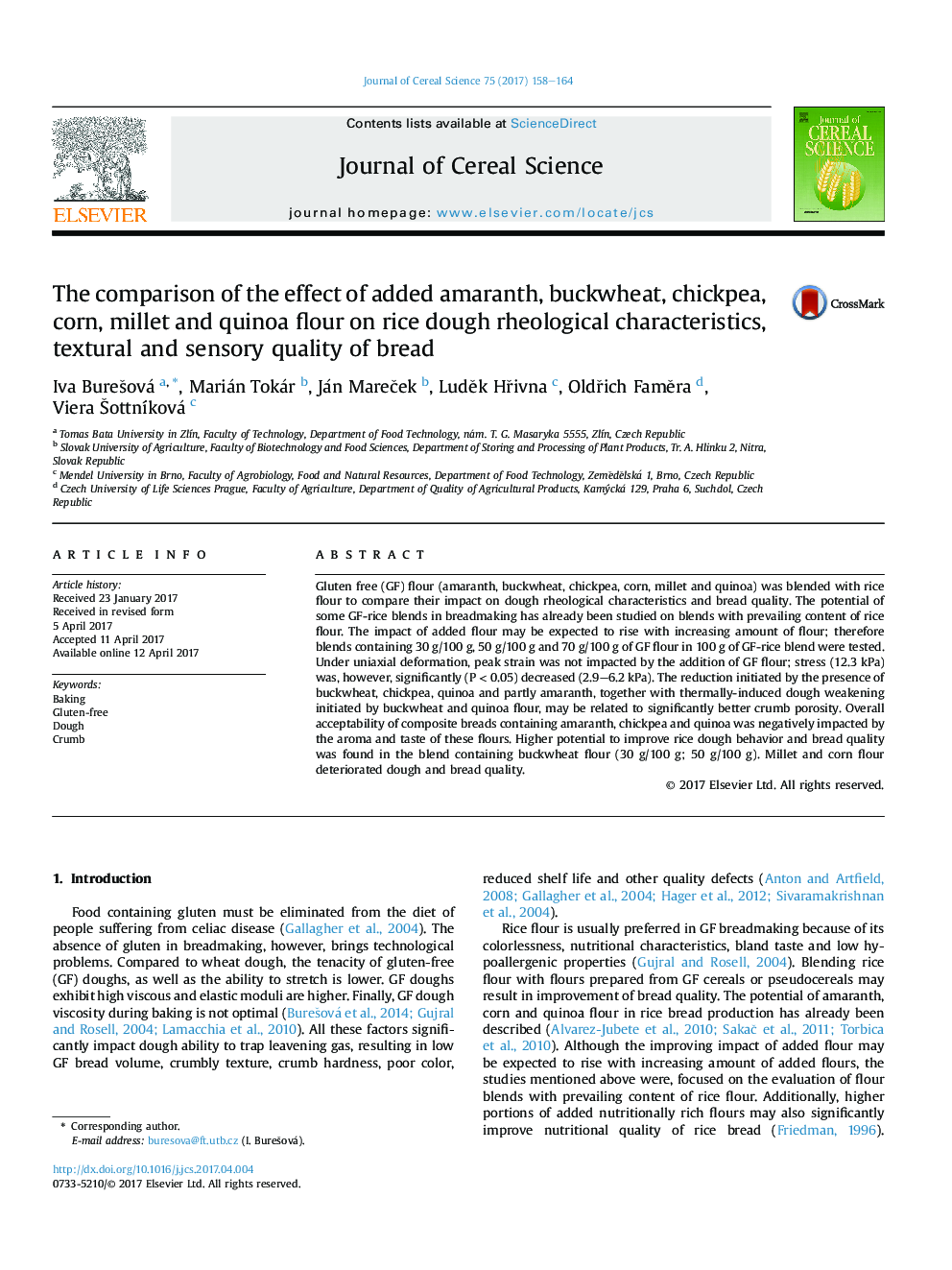| Article ID | Journal | Published Year | Pages | File Type |
|---|---|---|---|---|
| 5762366 | Journal of Cereal Science | 2017 | 7 Pages |
Abstract
Gluten free (GF) flour (amaranth, buckwheat, chickpea, corn, millet and quinoa) was blended with rice flour to compare their impact on dough rheological characteristics and bread quality. The potential of some GF-rice blends in breadmaking has already been studied on blends with prevailing content of rice flour. The impact of added flour may be expected to rise with increasing amount of flour; therefore blends containing 30Â g/100Â g, 50Â g/100Â g and 70Â g/100Â g of GF flour in 100Â g of GF-rice blend were tested. Under uniaxial deformation, peak strain was not impacted by the addition of GF flour; stress (12.3Â kPa) was, however, significantly (PÂ <Â 0.05) decreased (2.9-6.2Â kPa). The reduction initiated by the presence of buckwheat, chickpea, quinoa and partly amaranth, together with thermally-induced dough weakening initiated by buckwheat and quinoa flour, may be related to significantly better crumb porosity. Overall acceptability of composite breads containing amaranth, chickpea and quinoa was negatively impacted by the aroma and taste of these flours. Higher potential to improve rice dough behavior and bread quality was found in the blend containing buckwheat flour (30Â g/100Â g; 50Â g/100Â g). Millet and corn flour deteriorated dough and bread quality.
Keywords
Related Topics
Life Sciences
Agricultural and Biological Sciences
Agronomy and Crop Science
Authors
Iva BureÅ¡ová, Marián Tokár, Ján MareÄek, LudÄk HÅivna, OldÅich FamÄra, Viera Å ottnÃková,
